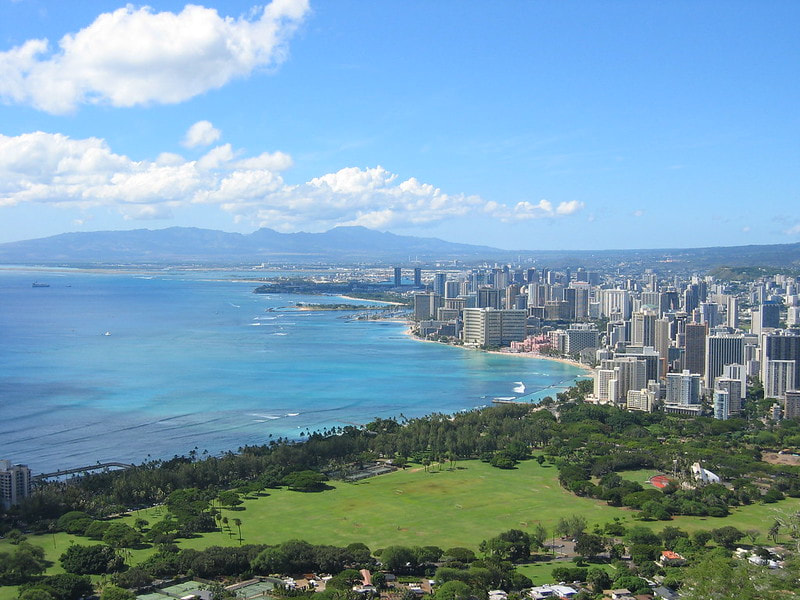My research examines the effects of climate change on coastal social-ecological systems, with specific focus on:
Recent examples include:
- Climate refugia in the coastal zone
- Land-sea interactions and paired terrestrial-marine conservation
- Equitable coastal management, e.g.,
- Community-based management, fisheries co-management
- Other Effective Area-based Conservation Measures (OECMs)
Recent examples include:
Sediment runoff affects reefs differently in urban and rural areas
|
Coral reefs are in rapid decline due to ocean heatwaves and coastal development. Sediment is a common reef pollutant but, during heatwaves, can shield corals from excessive sunlight. In a study published in Remote Sensing in Ecology and Conservation, we used Planet Dove satellite imagery to develop an algorithm for mapping sediment at extremely high spatial resolution (4 m). We then mapped turbidity throughout the Hawaiian Islands during a coral bleaching event. In a study in Frontiers in Marine Science, we found that sediment protects corals from bleaching, but high temperature weakens this effect. Sediment is more protective in urban areas, perhaps because urban corals have preexisting stress-tolerant traits.
|
Untapped federal policies can protect nearshore reefs
|
Monja Šebela; https://creativecommons.org/licenses/by/2.0/legalcode
|
Establishing new regulations can be time consuming and costly. However, existing terrestrial laws can be applied to protect coral reefs. In a recent policy analysis in PNAS, we present legal opportunities to increase coral protections in nearshore reefs under the Clean Water Act, Safe Drinking Water Act, and FEMA emergency management programs. We identify specific policies and procedures (e.g., industrial permit limits, nonpoint source management incentives, floodplain restoration programs) that can curb coastal coral reef pollution, both in the U.S. and worldwide.
|
Reef complexity promotes coral recruitment in a Hawaiian-led management zone
|
As coral mortality increases, there is a critical need to understand drivers of coral regrowth after bleaching events. Corals produce larvae that disperse in the open ocean before selecting a favorable habitat for settlement. In a recent study in PNAS, we measured reef structure at multiple scales using 3D models and aircraft remote sensing to determine how reef geometry affects coral regrowth. We worked with the community of Miloliʻi, Hawaiʻi, which was recently authorized as a Hawaiian-led sanctuary, to identify reefs that have high potential for coral regrowth.
|
Coral reef insurance: A tool to reduce "revenue leakage"?
|
Skyseeker; https://creativecommons.org/licenses/by/2.0/legalcode
|
In heavily touristed areas, particularly in the tropics, "revenue leakage" refers to a pattern where most tourism revenue leaks to external/multinational companies rather than benefiting the local economy. Coral reef insurance is a new financing tool that is designed to reduce revenue leakage by increasing business investment in local reefs, ideally generating jobs in coral restoration. To what extent do coastal businesses see value in coral reefs? What types of businesses are likely to invest in coral reef insurance? We surveyed 202 coastal tourism businesses on Oʻahu and Hawaiʻi Island ("Big Island") to address these questions. In review.
|
For additional publications, please see my Publications page.
|
rrcarlson@ucdavis.edu
|



